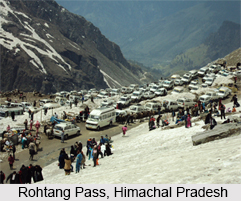 Urdu poetry has a richness in tradition and has many different forms that were basically started from Arabic and borrowing mush from Persian Language. Urdu poetry witnessed its growth and development during the early eras of 13th century, when some bards of the north India initiated in varied experimentation with the style. However the ingrained classic forms of Urdu poetry that contemporary generation are accustomed with did not really take on a final shape until the 17th century, when Urdu became the official language of the court in the Indian subcontinent.
Urdu poetry has a richness in tradition and has many different forms that were basically started from Arabic and borrowing mush from Persian Language. Urdu poetry witnessed its growth and development during the early eras of 13th century, when some bards of the north India initiated in varied experimentation with the style. However the ingrained classic forms of Urdu poetry that contemporary generation are accustomed with did not really take on a final shape until the 17th century, when Urdu became the official language of the court in the Indian subcontinent.Today a significant part of Indian culture, just like other languages, the history of Urdu poetry also shares origin and its influences with other linguistic traditions within the Urdu-Hindi-Hindustani mix. Urdu poetry gained immense popularity in the 18th century when Urdu replaced Persian as a major language of the region. In the 18th there was a scarcity of newspapers. Urdu poetry's history is an amazing journey that is replete with intrigue for the curious onlookers. However, the amazing intensity with which it continues to thrive amidst the hurly burly of the cotemporary age bears the testimony of its presence.
Literary personalities, as far back as Amir Khusro (1253-1325) and Kabir (1440-1518) later inspired Urdu poets, and served as linguistic and intellectual sources. Ghalib, Anis, Meer, Dard, Dabeer, Iqbal, Zauq, Firaq, Josh, Jigar, Faiz and Syed Shmad Shah (Ahmad Faraz) are among the greatest poets of Urdu literature. The tradition is mainly concentrated in the subcontinent. In the year 1947, following the Partition of India, it found main scholars and poets residing mainly in present day Pakistan. Mushairas (or poetic expositions) are today held worldwide in metropolitan areas.
Like Elizabethan English which is complete with social and regional realities, Urdu holds a remarkable wealth of the conventions of many cultures and languages. This element got a great boost in the 18th century when there weren't many newspapers or media of information available to the public. Urdu poetry became a more intimate form of communication regarding the social and political tribulations of the time. The commonest form of communication, in tradition with the Arabic culture, was to read poetry in gatherings, called musha'era, where poets would gather to read poems crafted in accordance with a metrical pattern, which was often prescribed beforehand. Not only did the poetry have to meet the choice of word, and the loftiness of thought but also strict metrical patterns. There were competitions like those held in ancient Greek, Roman and pre-Islamic Arabic cultures. However, the intensity and warmth of the musha'eras that developed in Delhi were indeed unique and helped popularize Urdu as the language of poetry in the Mughal Empire. A culture built around taking lessons in writing Urdu poetry became the in-thing for the royalty, and the masters of poetry were given reverence worthy of kings.
For more, visit the link below:











